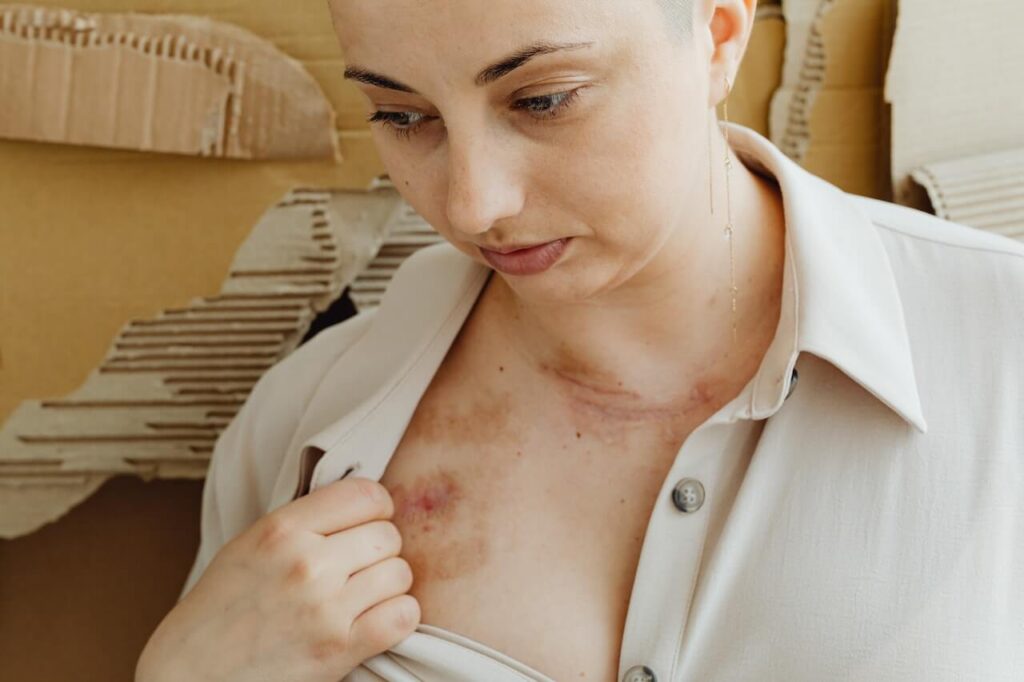I’m here to share my story of when skin bleaching went wrong. I know, I know, you’re thinking, “Why would anyone want to bleach their skin?” But trust me, I had my reasons. And it was a big mistake.
Now, I don’t want to scare anyone off, so I’ll just say this: if you’re thinking about bleaching your skin, please don’t. It’s not worth it. Just enjoy your beautiful skin the way it is.
The dangers of skin bleaching at home
Skin bleaching is the process of using chemicals to lighten the skin. This can be done for cosmetic reasons, to treat skin conditions such as vitiligo, or to prepare the skin for surgery.
Skin bleaching products are available over the counter and online, but they can also be made at home using ingredients such as lemons, baking soda, and hydrogen peroxide.
While skin bleaching may be safe when done under the supervision of a dermatologist, there are risks associated with using these products at home. The most common side effects of home-use skin bleachers are redness, burning, itching, and blistering. In some cases, these side effects can lead to permanent scarring.
There are also health risks associated with some of the ingredients used in home-made skin bleachers. For example, hydrogen peroxide is a strong oxidizer that can cause damage to the DNA in cells, while lemons contain citric acid which can lead to chemical burns.
If you are considering skin bleaching, it is important to speak to a dermatologist first. They will be able to advise you on whether bleaching is right for you, and if so, which product will be best suited to your needs.
Avoid irreversible damage to your skin
Skin bleaching is the process of lightening the skin by using chemicals or other agents. It’s a practice that dates back centuries and has been used for everything from cultural reasons to trying to achieve a more youthful appearance.
Skin bleaching is not without risks, however. In some cases, it can lead to permanent damage to the skin, including:
- Thinning of the skin
- Scar and/or Marks
- Loss of skin elasticity
- Discoloration
- Rashes
- Burns
If you are considering skin bleaching, it’s important to consult with a dermatologist first to make sure you are doing it safely. There are also a number of natural alternatives that can help you achieve your desired results without putting your health at risk.
Can bleached skin go back to normal?
It is possible for skin to return to its natural color after bleaching, but it is not guaranteed. In some cases, the skin may be permanently discolored or damaged. It is important to consult with a dermatologist before bleaching your skin, as they can assess your individual risks and recommend the best course of action.
Bleaching your skin at home safely
skin bleaching is a process where people use chemicals to lighten the skin. People do this for a variety of reasons, including making the skin look more even, getting rid of dark spots, or making themselves look more attractive.
There are a number of ways to bleach your skin, but the most common is to use hydroquinone. Hydroquinone is a chemical that inhibits the production of melanin, which is what gives your skin its color.
If you’re thinking about bleaching your skin, it’s important to do it safely. First, you should consult a dermatologist. Here are some products that might be safe (again, consult a doctor), and also products to avoid:
- Only use products that contain 2% hydroquinone or less. Higher concentrations are available by prescription only and can cause serious side effects.
- Don’t use hydroquinone for more than 4 months at a time. Long-term use can cause permanent darkening of the skin (exogenous ochronosis).
- Avoid using other skin care products that contain exfoliating agents (like glycolic acid or retinoids) at the same time as hydroquinone. This can increase your risk for irritation and skin damage.
- Be sure to wear sunscreen every day when using hydroquinone. Hydroquinone makes your skin more sensitive to sunlight and you may be more likely to experience sunburn, blistering, and hyperpigmentation.
Skin lightening products that are safe to use
There are a number of skin lightening products on the market that claim to be safe and effective. However, many of these products contain harsh chemicals that can cause serious side effects. Some of the most common skin lightening ingredients include hydroquinone, mercury, and corticosteroids.
Hydroquinone is a bleaching agent that can be found in over-the-counter skin lightening products. However, hydroquinone can cause a number of side effects, including irritation, redness, and dryness. In some cases, it can also lead to ochronosis, a condition that causes blue-black patches on the skin.
Mercury is another ingredient found in some skin lightening products. Mercury is a toxic metal that can cause kidney damage, brain damage, and even death. Mercury exposure can also lead to birth defects and developmental problems in children.
Corticosteroids are another common ingredient in skin lightening products. Corticosteroids are hormones that can suppress the immune system and cause a number of side effects, including thinning of the skin, stretch marks, and acne. In addition, corticosteroids can also cause adrenal suppression, which can be life-threatening.
There are a number of safe and effective alternatives to harsh chemicals when it comes to skin lightening. Some of the most popular natural ingredients include turmeric, aloe vera gel, lemon juice, and licorice extract. These ingredients have been used for centuries to safely and effectively lighten the skin.
To be more informed about the dangers of skin lightening, you should start first with skin cleansing
Conclusion
There are a number of risks associated with skin bleaching, and these risks increase when the products used are not of a high quality, or when they are used incorrectly. Some of the most common side effects of skin bleaching include irreversible skin damage.
